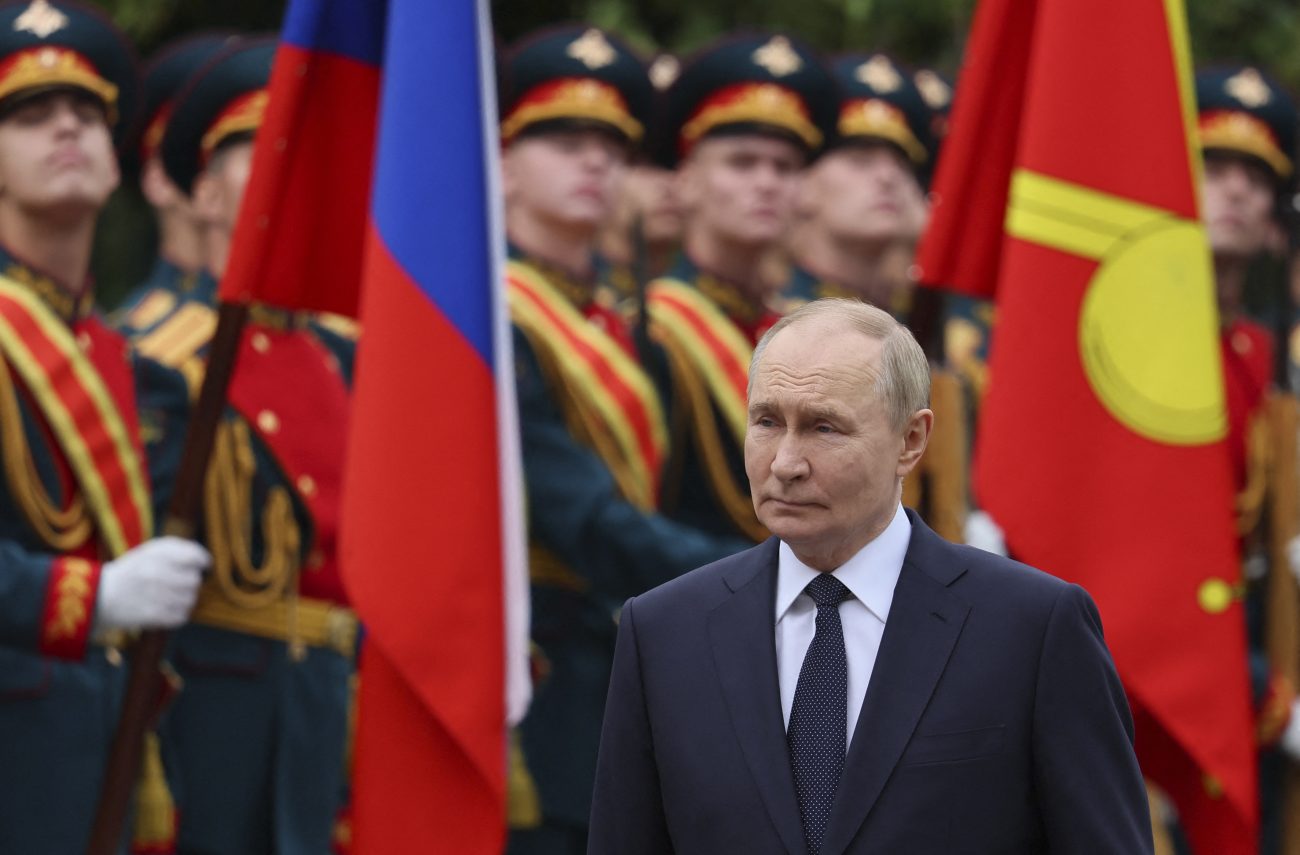Ukrainian soldier holds up a sleek, green, dome-nosed drone interceptor no bigger than a house cat.
It’s a Russian FPV interceptor drone — captured just days ago.
“They copied our design,” says Konstantin, 27, deputy commander of an anti-air battery in the 3rd Assault Brigade.
“But they 3D-printed the whole thing in one piece. It’s faster, lighter, and dirt cheap to mass-produce.
”That single object sums up the brutal technological arms race now defining Europe’s biggest war since 1945.
Drones — both sides launch thousands every single day — have turned the 1,200 km front into a 15 km-deep automated kill zone. They scout, strike, and now hunt each other in mid-air.
Traditional artillery and tanks mattered, but the side that wins the drone chess match could win on the new battlefield.
Ukraine invented cheap kamikaze interceptors in spring 2024 to swat Russia’s Geran-2 (Shahed-136) swarms out of the sky. A U.S. Patriot missile costs $3–4 million per shot. Ukraine’s homemade interceptor? Around $2,000.
For a while, Kyiv had the edge. Now Russia has not only caught up — it’s pulling ahead. The latest Russian attack drones are elementary but effective AI: infrared sensors, autonomous evasion routines, and fibre-optic cables that make them immune to jamming.
Ukrainian crews have to redesign countermeasures almost monthly.
“We adapt every four weeks, sometimes every two,” Konstantin says, surrounded by humming 3D printers and screens scrolling code.
“If you fall behind even one cycle, you start dying.
”His workshop looks more like a Silicon Valley garage than a military unit. Long-haired engineers in hoodies, former esports pros, and 19-year-old gamers who can thread an FPV drone through a basement window at 150 km/h now outrank traditional officers in importance.
“The best pilots grew up on PlayStation controllers,” Konstantin shrugs.
Kyiv has spent three years turning itself into the world’s most lethal drone laboratory — and Ukrainian commanders are blunt: the West is not keeping up.
“NATO doctrine, NATO equipment lists, NATO logistics — a lot of it is already obsolete here,” says “Betsik,” the brigade commander, says flatly. “You’re not in the future. You’re not even in the present. You’re late.”
Foreign Minister Andriy Sybiga said the same last week: “The new arms race isn’t measured in nuclear warheads. It’s measured in millions of cheap drones flying 300 km behind the lines.”
A new report from the Center for Strategic and International Studies in Washington concludes the war in Ukraine has “compressed a decade of military innovation into three years,” leaving Western arsenals playing catch-up in electronic warfare, autonomous systems, and mass-produced precision munitions.
Back in the drone lab, Konstantin plugs the captured Russian interceptor into a laptop. New firmware flashes on the screen — uploaded just last week.
“They’ll have the next version in the field in ten days,” he says. “We’d better have an answer ready, because in this war, ten days is an eternity”.

Russia Tests NATO
Russia continues to “test” NATO defenses!
In a swift response to yet another unauthorized drone entry, Romania—a NATO ally sharing a border with Ukraine—deployed fighter jets in the early hours of Wednesday, according to the country’s defense ministry.
Such airspace violations have become a grim routine for Romania since Russia’s full-scale invasion of Ukraine in 2022, with drone debris occasionally landing on Romanian soil and heightening regional tensions.
The most recent episode unfolded just past midnight along the Ukraine frontier, amid ongoing Russian aerial assaults.
Two German jets, stationed in Romania as part of NATO operations, were actively patrolling the skies when the incursion was spotted, the ministry detailed in an official statement.
Residents in the southeastern Tulcea county received immediate mobile alerts as radar briefly picked up the drone’s signal—indicating it had penetrated about eight kilometers (five miles) into Romanian airspace—before it vanished from screens.
The device flickered back onto radar intermittently for about 12 minutes, prompting a second alert for nearby residents of Galati County.
To bolster the response, Romania’s own F-16 fighters were quickly airborne, the ministry confirmed.
“No ground impacts or collisions with aircraft have been recorded,” it noted, while specialized teams prepared for on-the-ground sweeps to investigate further.
Earlier on Monday, authorities evacuated two villages—the first such wartime measure in Romania—after a Russian drone strike in Ukraine ignited a blaze on a liquefied petroleum gas tanker crossing the Danube River. The all-clear came on Tuesday, allowing residents to return.
- Story by Agence France-Presse
- Edited by ET Online Desk




